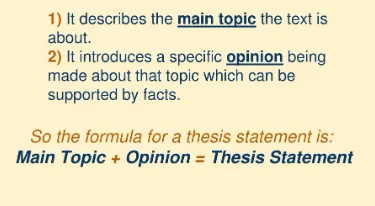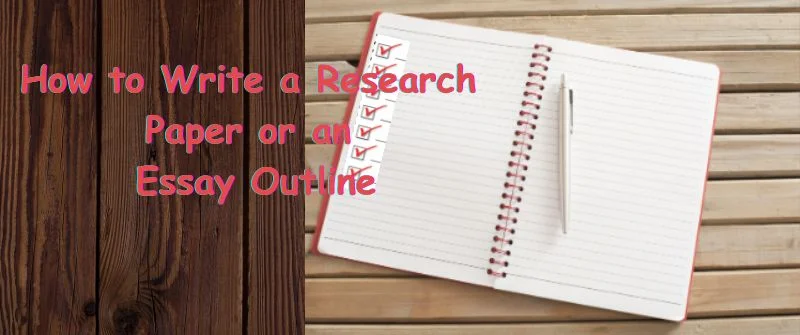How to Write Commentary Essay – What is a Commentary in Essay Writing

Ever find yourself grappling with thoughts that beg to be shared? Commentary essays, ever elusive yet magnetic, unlock the gateway to expression. Have you ever yearned to dissect an idea—dissect it with surgical precision?
In this narrative landscape, I guide you through the intricate threads of commentary—essays that serve as vessels for personal reflection and analysis.
With a mere glance, we will define the essence, unearth the profound purposes, and unveil the diverse forms of commentary essays.
Join me in cracking the art of commentary, where every word is a stroke of thoughtful reflection.
How to Choose a Topic for a Commentary Essay
Choosing a captivating topic for a commentary essay is akin to selecting the perfect melody. It begins with identifying engaging themes that resonate personally.
What ignites curiosity or sparks passion?
Delving into personal interests ensures a genuine connection, fostering authenticity in your commentary. However, it’s not a solo journey; research plays a crucial role.
Explore and narrow down ideas through in-depth investigations, seeking intersections between personal resonance and broader relevance.
The sweet spot lies where passion aligns with significance. This intricate dance between personal connection and broader appeal ensures a topic that not only captivates but also invites readers into the discourse.
How to Write a Commentary Essay
1. Choose a Good Topic

Selecting a captivating topic is the inaugural dance in the journey of crafting a commentary essay. The process of cherry-picking the right subject is akin to a curator choosing artwork for an exhibition.
In this journey, I explore my interests and passions, seeking resonance between the chosen theme and my personal experiences.
The topic becomes a canvas, inviting me to weave my narrative, thoughts, and insights into a tapestry of reflection.
It is not just about selecting a subject; it’s about finding a companion for a meaningful conversation.
Thus, the journey of a commentary essay begins with the profound act of choosing a topic that whispers to my curiosity and beckons exploration.
2. Conduct Thorough Research
My compass always directs me to reliable sources, be they scholarly articles, books, or credible websites.
Navigating through diverse perspectives, I become an explorer of ideas, understanding the nuances that shape the discourse.
Armed with a discerning eye, I gather a treasure trove of information, taking meticulous notes like a cartographer mapping uncharted territories.
This research journey is not just about accumulating data; it’s a quest for understanding, a preparatory expedition before I embark on crafting my commentary essay with depth and insight.
3. Craft a Compelling Introduction
I opt for the dramatic flair of anecdotes or stories, inviting readers into the narrative fold.
Within this theatrical framework, I introduce the chosen topic, carefully crafting the context in which it thrives.
As the spotlight intensifies, I unveil the essay’s purpose, signaling the thematic overture that will unfold.
Also, this introduction, akin to an opening act, aims to engage and captivate, preparing the audience for the insightful commentary that awaits in the ensuing scenes of my written performance.
4. Develop a Strong Thesis Statement
In a commentary essay, the thesis statement serves as the conductor, directing the harmonious interplay of ideas.

I compose a thesis that resonates with clarity, enunciating my argument or perspective with precision.
Each note within this statement focuses sharply on the specific points I intend to unfold, creating a nuanced melody of discussion.
I embrace controversy, infusing my thesis with a thought-provoking essence akin to a musical chord that resonates in the minds of my readers.
Generally, this orchestrated thesis becomes the guiding refrain, leading the essay forward with an assured and melodic cadence.
5. Create a Well-Structured Body Paragraphs
Within the tapestry of my commentary essay, I weave a structured narrative through well-crafted body paragraphs.
Each paragraph is a carefully orchestrated movement, organized with a logical flow that allows ideas to crescendo seamlessly.
Transitions act as musical notes, creating a harmonious journey between paragraphs. Evidence, like a powerful chord, resounds through relevant quotes and data.
My commentary interprets this evidence, breathing life into the composition. Every paragraph is a masterful stroke, connecting back to the thesis statement with the finesse of a skilled composer, ensuring the entire essay resonates with coherence and depth.
6. Write a Compelling Conclusion
In my commentary essay, the conclusion emerges as a resonant crescendo, summarizing the keynotes that echo through the preceding movements.
I deftly restate the thesis in varied tones, allowing its essence to linger in the minds of my readers.
With a final chord, I provide closure, leaving a lasting impact akin to the lingering resonance of a powerful musical finale.
Finally, this conclusion isn’t merely an end. It is a grand finale that ensures the composition of my commentary essay echoes in the minds of those who have been part of this literary performance.
7. Refine and polish your Commentary Essay

In the refining process, I revise and proofread my commentary essay, polishing each sentence to a gleaming sheen.
Seeking constructive feedback becomes my compass, guiding me through the intricate labyrinth of improvements.
With a discerning eye, I ensure clarity, coherence, and consistency throughout the essay.
Tips when Writing a Good Commentary Essay
Mastering the Art of Analysis
When crafting a compelling commentary essay, mastering the art of analysis becomes my guiding light.
I cultivate critical thinking skills by delving into the intricate layers of interpretation. Rather than merely summarizing, I pivot towards emphasizing analysis, probing the profound “why” behind each elucidation.
I use this approach to transform my commentary essay into a thought-provoking exploration, inviting readers to journey beyond the surface.
After infusing depth and nuance into my analysis, I not only unravel the intricacies of the subject matter but also beckon readers into the realm of contemplation.
Effective Use of Evidence and Examples
The crux of crafting a compelling commentary essay lies in the effective use of evidence and examples.
I navigate the selection of appropriate evidence, ensuring its relevance and resonance with my thesis.
Distinguishing between various types of evidence, I strategically deploy statistics, anecdotes, or expert opinions to fortify my arguments.
Crucially, each piece of evidence serves as a beacon, guiding readers back to the luminous core of my thesis.
Such orchestration not only bolsters the credibility of my discourse but also weaves a seamless tapestry of persuasion, compelling readers to traverse the intellectual terrain I’ve artfully laid out.
Polishing Your Writing Style
With a discerning eye, I wield clear and concise language, ensuring each word contributes meaningfully to the narrative.
I harmonize sentence structures and lengths, orchestrating a symphony of eloquence. My pen becomes a precision tool, excising redundancy and wordiness, leaving a distilled essence that resonates with clarity.
Also, this stylistic finesse not only heightens the essay’s readability but also casts a spell, captivating readers through the sheer artistry of expression.
It is in these subtle nuances that the true mastery of a commentary essay emerges.
How to Structure a Commentary Essay
Structuring a commentary essay is an art that begins with a captivating opening, ensuring a clear and concise thesis statement. The body paragraphs organize ideas, employing topic sentences as guides and incorporating diverse evidence. Let me expound on this.
1. Introduction

I begin a commentary essay with an artful introduction. I invite readers into a captivating opening, setting the stage for a thoughtful exploration. This entry point beckons them to delve into the discourse, establishing the groundwork for an engaging and insightful journey.
2. Thesis Statement
Crafting a commentary essay hinges on a thesis statement that stands as a beacon of clarity and conciseness.
It is a pivotal sentence that outlines the primary argument, acting as the compass guiding readers through the intricate landscape of the discussion.
Its clarity serves as a roadmap, ensuring that the ensuing exploration remains focused and purposeful.
3. Body Paragraphs
Within the body paragraphs, my essay has a masterpiece of ideas, each movement meticulously crafted to contribute to the overall harmony.
Each paragraph opens with a topic sentence, a conductor setting the tone and direction for the ensuing discussion.
Supporting evidence, ranging from concrete facts to illustrative examples and authoritative quotes, fortifies these ideas.
The real magic, however, lies in the nuanced analysis and interpretation, where I dissect the significance, explaining the relevance of each piece in the grand tapestry of my commentary.
Mostly, this meticulous organization ensures a compelling and cohesive narrative.
4. Conclusion
As I draw the curtain on my commentary essay, I emphasize the significance of the main points. The journey through this analysis has illuminated diverse perspectives, making it evident that my thesis holds weight.
The interplay of evidence and interpretation underscores the relevance of the discussed topic.
In weaving together the fabric of my argument, I’ve reinforced the core ideas, leaving an indelible impression on the reader.
Generally, this process of exploration and articulation has not only broadened my understanding but also imparted a sense of conviction in the efficacy of my perspective.
As I bid farewell to this discourse, I carry forward the intellectual growth fostered by the analytical journey undertaken.

Josh Jasen or JJ as we fondly call him, is a senior academic editor at Grade Bees in charge of the writing department. When not managing complex essays and academic writing tasks, Josh is busy advising students on how to pass assignments. In his spare time, he loves playing football or walking with his dog around the park.




